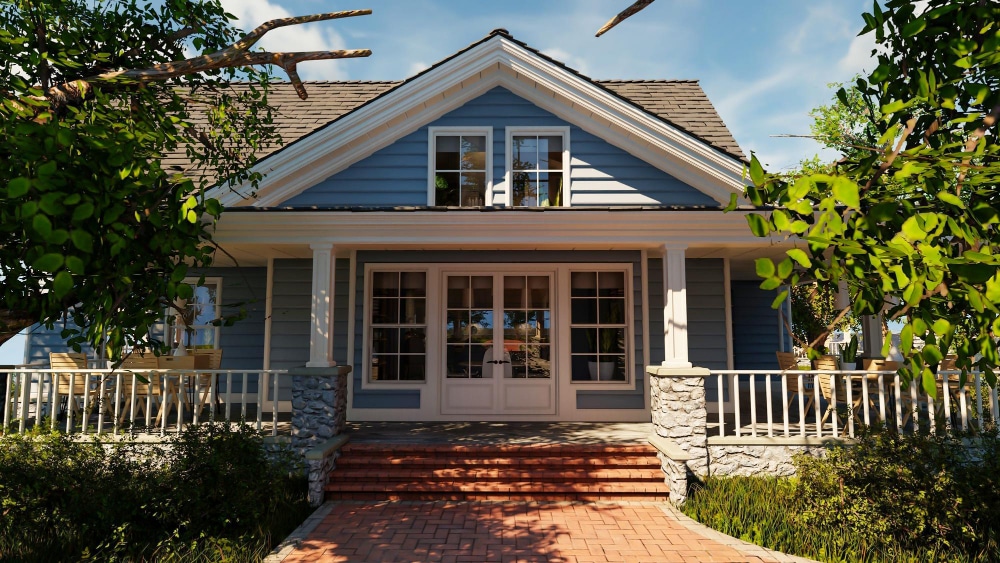Building a deck can transform your outdoor space into a valuable home extension, providing an ideal relaxation, entertainment, and recreation spot. A well-designed deck enhances your property’s aesthetic appeal and functionality.

The possibilities are endless, whether you envision a spacious area for summer barbecues, a cozy nook for morning coffee, or a multi-level platform for family gatherings. However, constructing a deck requires careful planning and execution. Here are six things to remember when embarking on your deck-building journey.
1. Hire a Professional
When building a deck, hiring a professional can save you time and effort while ensuring quality results. Experienced deck builders know the details of design, local building codes, and material selection, which are vital for a safe and durable structure. By enlisting their expertise, you gain insight into best practices and their ability to foresee challenges during construction. For residents in the area, Fort Wayne Deck Builders can offer top-notch services and turn your deck dream into reality. An expert’s craftsmanship enhances your deck’s visual appeal and ensures your project meets the highest standards.
2. Determine the Purpose of Your Deck
Before starting the design and construction process, it’s crucial to define the purpose of your deck. Think about how you’ll use the space—will it be a peaceful retreat for relaxation, a lively area for entertaining, or a multifunctional space for family activities? Your deck’s intended use will impact critical aspects like size, layout, and materials.
For instance, if you plan to host frequent barbecues or gatherings, consider a larger space with built-in seating or an outdoor kitchen. On the other hand, a cozy area with comfortable furniture and greenery may be perfect for quiet mornings or evenings. Also, consider who will use the deck; families with kids may need safety features and durable materials, while couples prefer a more stylish design.
3. Consider Your Budget
Creating a realistic budget is a vital step in the deck-building process. It will guide your choices about materials, design, and labor. Start by evaluating your finances to see how much you can comfortably invest without overextending yourself. Research the costs of different materials—like wood, composite, or PVC—as their prices and durability can vary significantly.
Include additional expenses like permits, professional labor, and desired features like lighting, railings, or built-in seating. To prevent surprises, set aside an extra 10-20% of your budget for unforeseen costs during construction. Planning carefully lets you make informed choices that align with your aesthetic goals while keeping the project financially viable. Also, contact multiple contractors for estimates to ensure you get the best value for your investment.
4. Choose the Right Materials
The materials you select for your deck impact its appearance, longevity, and maintenance requirements. Traditional pressure-treated wood is affordable but may require more upkeep over time. Natural woods like cedar and redwood add a rustic charm but can be costly and tend to weather quickly.
Composite decking, made from a mixture of wood fibers and plastic, is gaining popularity due to its low maintenance, durability, and design versatility. PVC decks are another alternative that offers the same benefits but with added resistance to moisture damage. Whichever material you choose, ensure it aligns with your budget, desired look, and ability to withstand local climate conditions.
5. Check Local Building Codes
Before building a deck, it’s essential to check your local building codes to ensure compliance. These regulations vary depending on location and may cover aspects like size and height restrictions, required permits, proper railing height, and distance from property lines. Non-compliance could result in fines or having to tear down your structure.
Local codes also promote safety by requiring specific construction techniques, materials, and features for decks. Ensure you understand the requirements before starting your project to prevent costly mistakes and delays. If you’re working with a professional contractor, they are likely familiar with local codes and can advise you accordingly.
6. Plan for Proper Drainage and Ventilation
Proper drainage and ventilation ensure your deck remains safe and durable. Without adequate ventilation, moisture can accumulate under the deck, leading to mold, rot, and other damage. Your deck should be constructed with a slight slope away from your house to promote runoff.
Proper drainage also includes installing a vapor barrier between the ground and deck structure to prevent moisture buildup. The plan for proper air circulation should also be made by keeping gaps between boards for airflow. Including these features in your design will help maintain the longevity of your deck.
Building a deck is an exciting project that greatly enhances your outdoor living experience. A well-designed deck adds style to your home and provides a versatile space for relaxation, gatherings, and enjoying nature. As you embark on this journey, embracing creativity while staying true to your style and the unique features of your property will lead to a cherished space that reflects your lifestyle. With careful planning, your new deck can become a favorite retreat for years, offering countless moments of joy and connection with family and friends.
